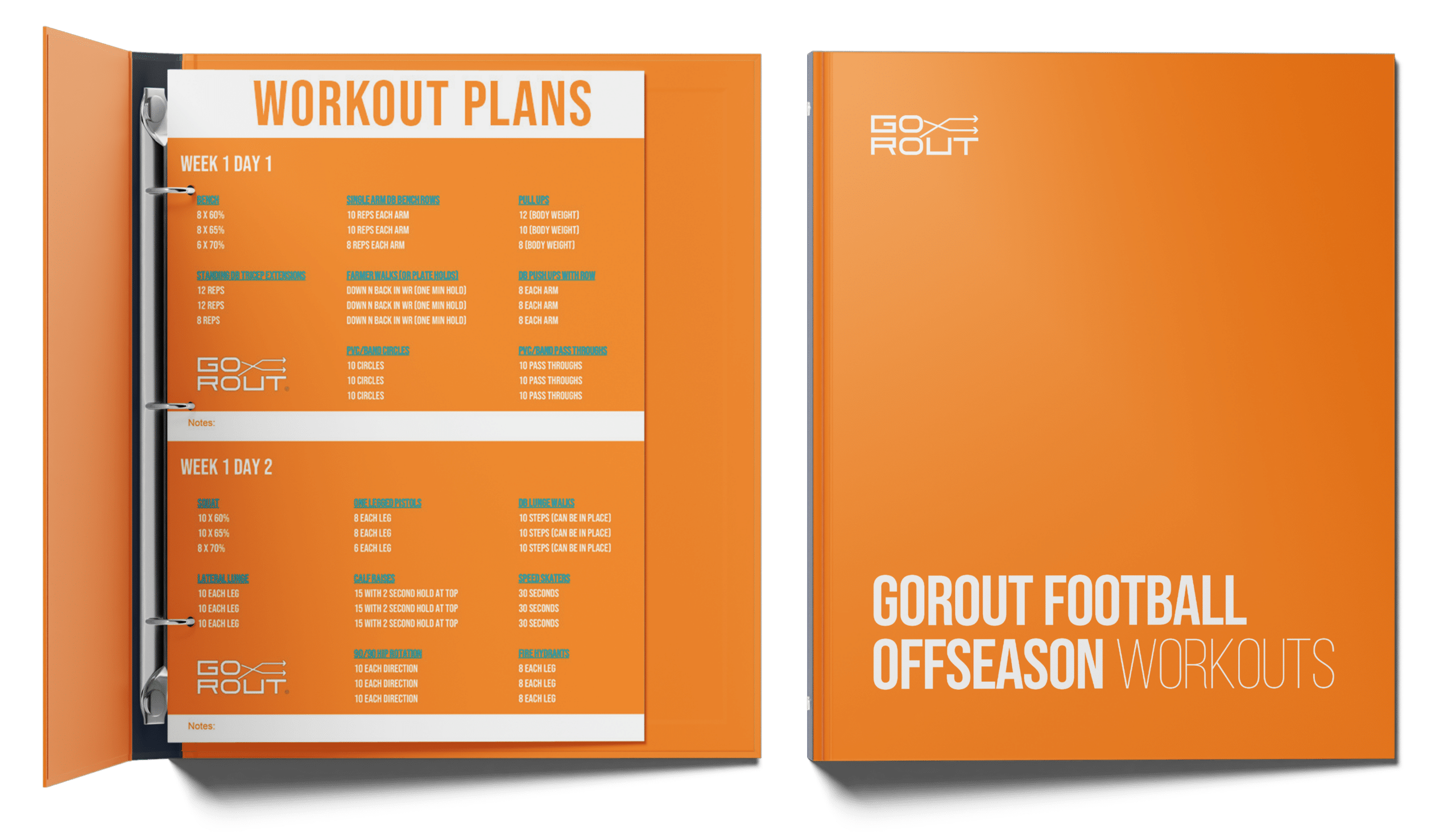


What Are Football Offseason Workouts?
Football offseason workouts set the foundation for players to build strength, speed, agility, and durability for the upcoming season. Through targeted lifts, drills, and exercises, players prepare their bodies for a full-season of hits and collisions while improving the skills and attributes required to succeed on the field.
A long season drains players' physical and mental batteries – they need time to recharge. Players should take the time necessary to rest their bodies and recover from any notable injuries they sustained the previous season.
They can also take a mental break to clear their head, but should consider moving on to the next season – mentally and physically – as soon as possible. To get a leg up on the competition and set themselves up for success, players need to always look forward.
While some players use the offseason to rest and step away from football – or participate in other sports – the most successful ones get right back at it. From a player’s perspective, there’s always someone out there pushing harder.
Football Offseason Workout Plans From GoRout
Whether you’re a coach or player, the hardest part about offseason training is finding the right program. An effective offseason workout plan for football focuses on gradual progression - increasing reps and weight slowly over time to maximize form and results.
GoRout’s free offseason workout plan offers a structured six-week program – broken into four days per week – with a variety of lifts and exercises targeting all areas of the body. It doesn’t matter if you’re a player hitting the gym independently or a coach planning team sessions, GoRout’s football offseason workout plan is free to download and can help you reach your maximum potential.
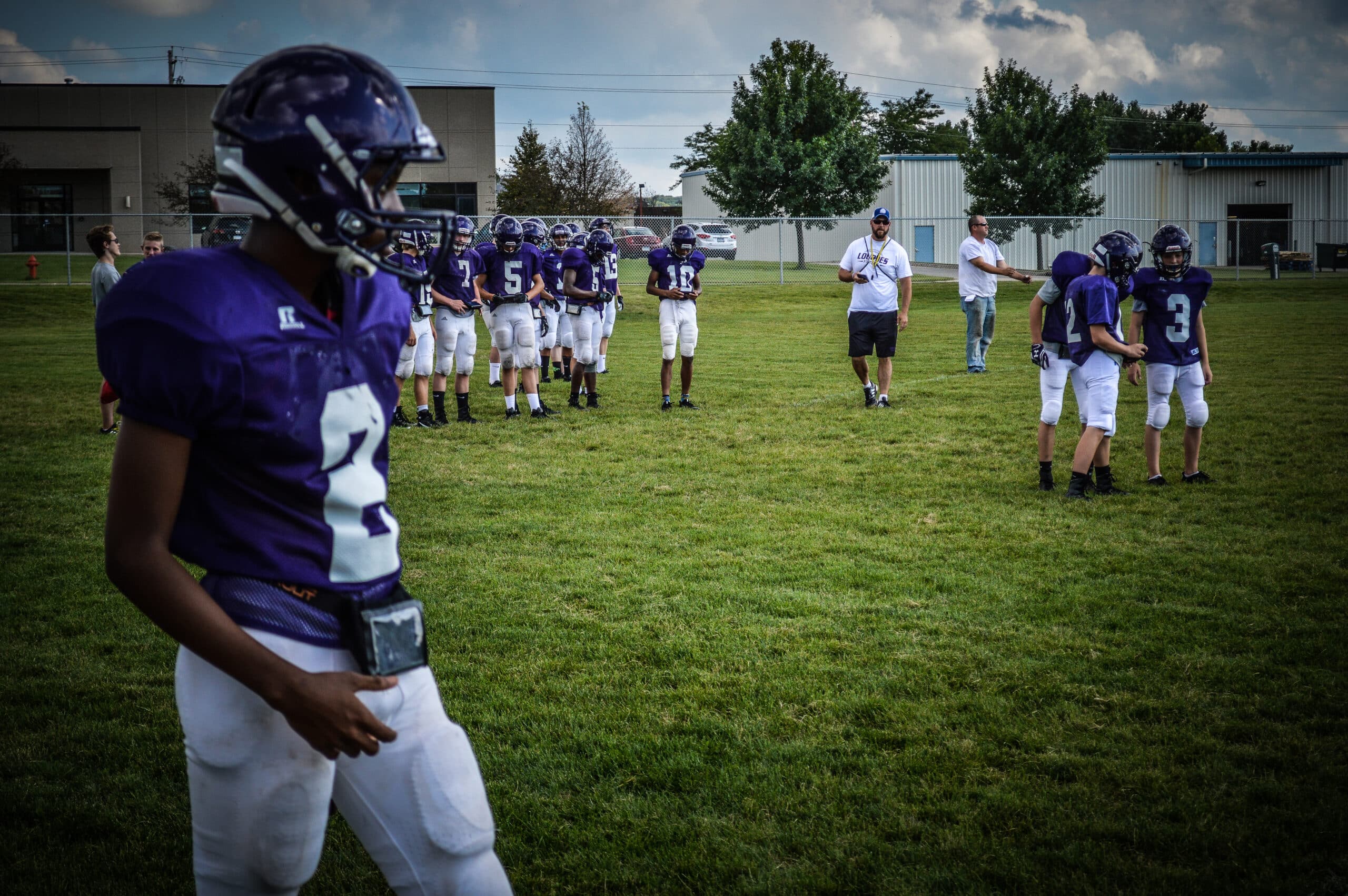
Why Is A Football Offseason Training Program Important?
The offseason is a crucial time for players to recover from the previous season while building strength, skills, and abilities for the upcoming year. It allows for a reprieve from the hard-hitting physical contact while setting them up for success through targeted training and conditioning workouts.
A well-planned offseason training program benefits football players and coaches by:
- Helping players’ bodies recover from the previous season
- Building strength through lifting programs
- Developing speed and agility through drills and exercises
- Improving skills through position-specific drills
- Enabling players to workout individually or with teammates
- Establishing relationships and camaraderie between coaches and players before the season begins
- Giving teams a leg up against their competition
Offseason Football Workout Program: What To Focus On
Putting the work in doesn’t matter if your workouts aren’t aligned with specific goals or lack strategy. To best maximize the time in your off season program, progressive overload – which is gradually increasing training volume and intensity – stimulates the body to adapt and grow stronger.
The goal is to progress over time and be ready for the next season. It can be tempting to force production and max out on day one, or hit as many reps as physically possible. That’s not sustainable. You’ll burn out before pre-season football ever starts and lifting heavy weight too quickly increases the likelihood of injury down the line.
Instead, use accumulation training to increase volume while keeping intensity low-to moderate. As you progress, transition to progressive overload to add weight after establishing a foundation.
There are great books and resources (including ours at GoRout) to help develop your plan. No matter who or what you follow, the best offseason football workouts consist of:
- Strength training
- Agility & speed training
- Conditioning, and
- Football skill building
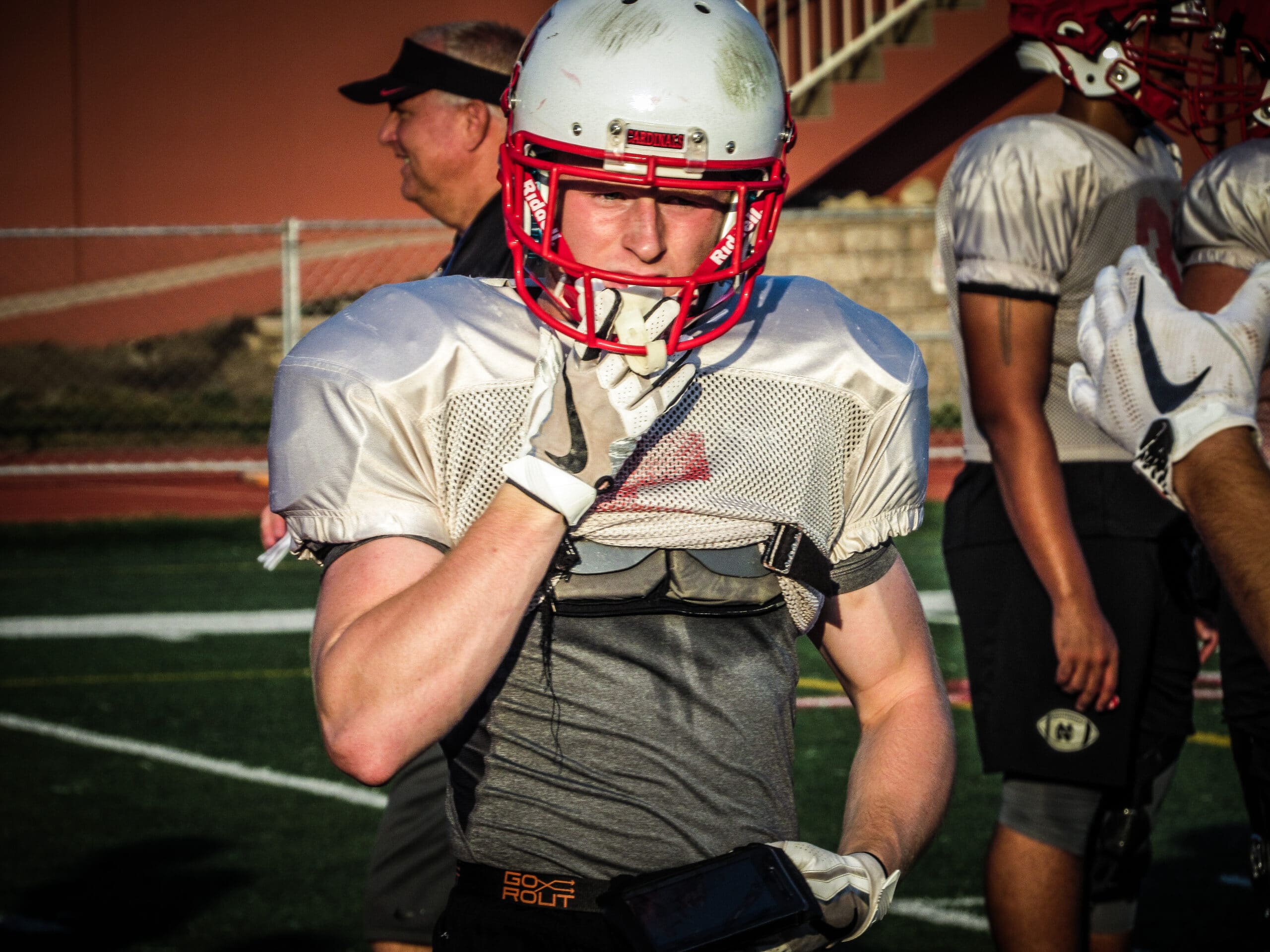
Strength Training
Strength training is arguably the most important component of off-season preparation. Crucial to nearly every component of the game, strength gains improve blocking, tackling, running, and throwing abilities.
The offseason is a critical period for rebuilding strength and power after a long previous season. Players need to maintain strength during the offseason to prepare for their next season. Success on the field is built in the weight room.
It’s important to focus on all areas of the body. Here are a few weight lifting exercises to target each section.
Upper Body
These exercises help players build upper body strength for blocking and tackling, taking hits throughout the season, and improving their grip.
- Bench press
- Bench rows
- Inverted rows
- Tricep extensions
- Bicep curls
- Lateral raise
- Shoulder press (Military press)
- Pull ups
- Push ups
- PVC/band circles
- PVC/band pass through
- PVC/band bench shoulder stretch
- PVC/band rotator cuff stretch
- Plate steering wheels
- One arm snatch
Lower Body
These exercises strengthen the lower half of the body with power development for blocking, tackling, explosiveness, and other movement.
- Squat
- Lunge walk
- Lateral lunge
- Calf raise
- Bulgarian split squat
- Romanian deadlift (RDL)
- Goblet squat
- Kettlebell swings
- Barbell ankle stretch
- Speed skaters
- Hip rotations
- Fire hydrants
- Box jumps
Full Body
These exercises work muscles throughout the body, generating total-body power output along with all the benefits mentioned in the upper and lower body sections.
- Hang and power cleans
- Push jerk
- Deadlift
- Farmer walks
- PVC/light bar good morning
Agility Training & Speed Work
Agility and speed training is essential for every position. Speed training focuses on acceleration and velocity to maximize quickness. Agility training is crucial to develop quick footwork and improve change of direction.
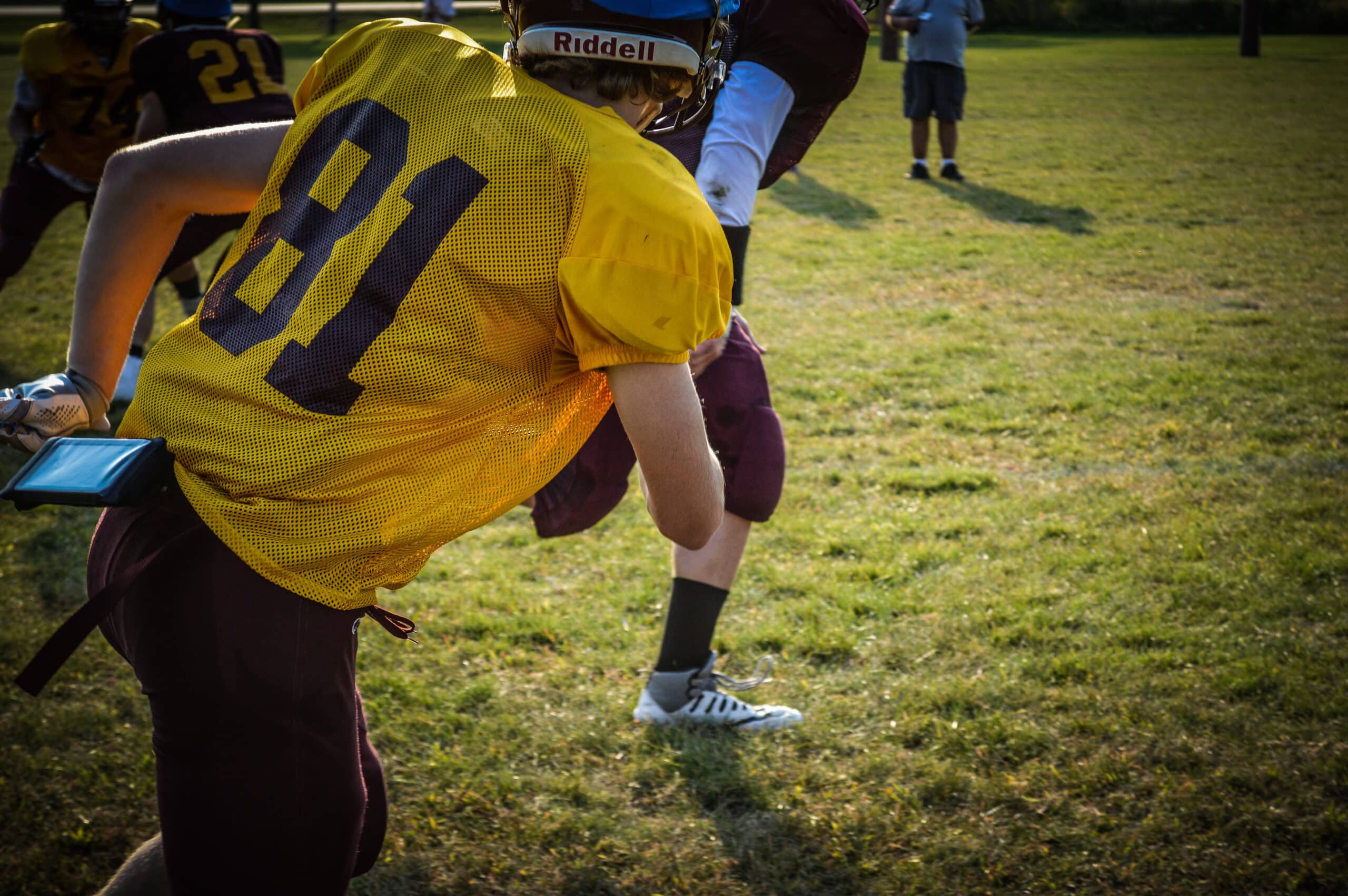
A mix of exercises help players improve explosiveness, lateral movements, acceleration, speed, and agility in their offseason workouts. Place the emphasis on maintaining control and proper technique for all sprints and agility drills. Focused training leads to improved speed.
Dynamic warm-ups are important before speed drills and agility training to prevent injuries and enhance performance. This can include:
- Dynamic stretches
- Bounding
- Arm circles
- Plyometrics, and
- High knees
Some examples of agility and speed training exercises for the football offseason include:
- Resistance sprints
- Cone drills
- Ladder drills
- Single-leg hops
- Broad jumps
- Reactive drills
- T-Drill
- 5-10-5 drill
Conditioning
Outside of speed and agility training, conditioning impacts overall athletic performance. If players aren’t conditioned properly, they won’t have the stamina to perform at full strength the entire season.
Many games are won or lost in the final minutes of the fourth quarter. A unit that’s been well conditioned in the offseason has a leg up on their opponents.
Some examples of conditioning drills that can be done independently or as a team include:
- High intensity interval training (HIIT) sprints
- Shuttle runs
- Stadium stairs/bleachers
- Bike/cycling
- Mile runs
- Hill runs
- 100 meter sprints
Football Skill Building
While the entire team can work together on strength, speed, agility, and conditioning, players should leverage the offseason to hone their position-specific skills. Whether you’re locked into a position or see a path to playing time in a different spot, the offseason is your time to put the work in.
If you have a solidified position, focus primarily on areas of strength you want to build upon or address weaknesses you need to improve. A wide receiver who struggled with route-running can take time in the offseason to work the football route tree.
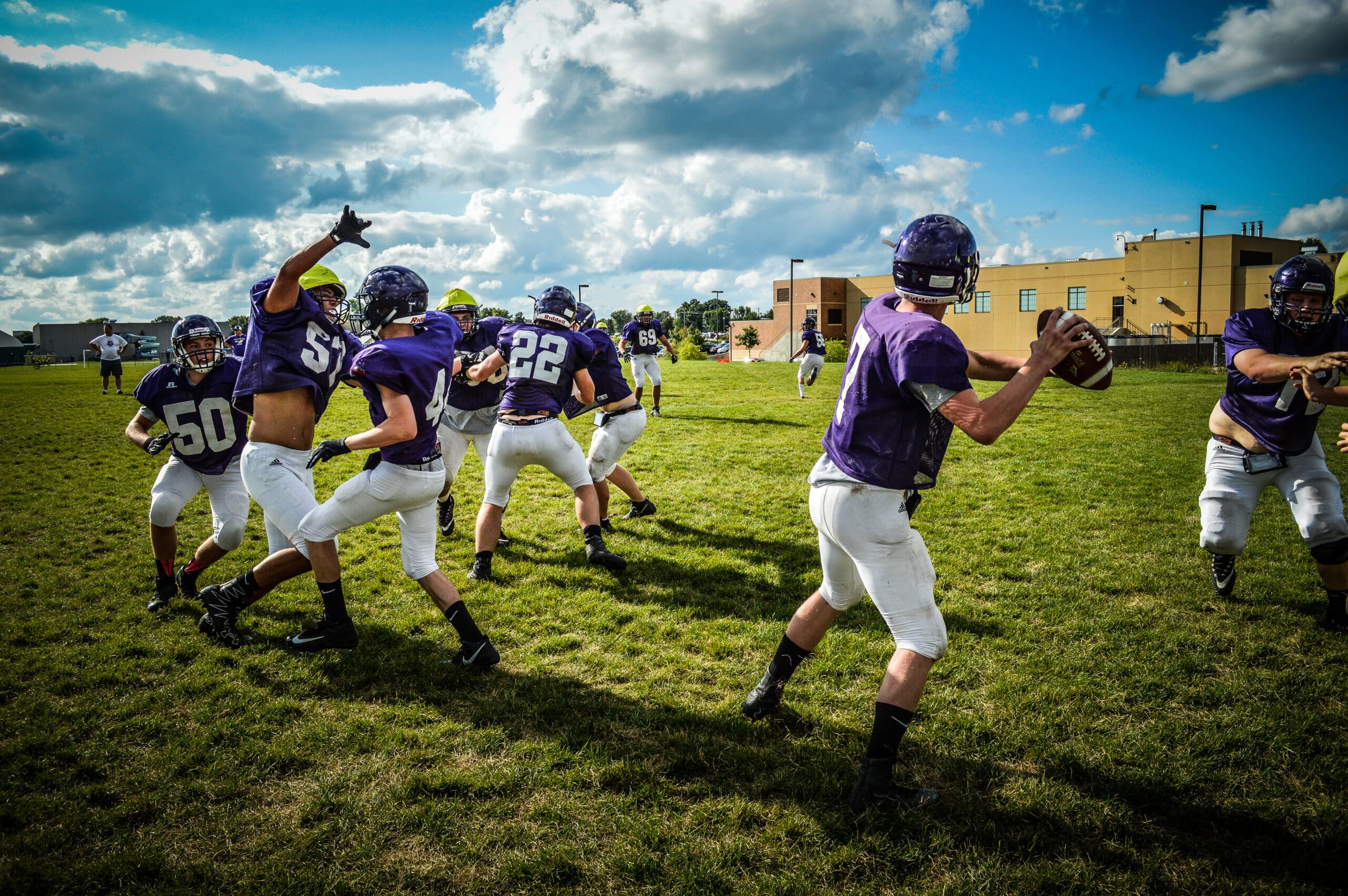
Players vying for a new position can use the offseason to get one step closer. If you’re building skills for a role you never played, talk with your coaches to identify areas to work on. By dedicating time in the offseason, you’ll be several steps ahead when the pre-season rolls around.
Injury Prevention and Recovery in Offseason Football Training
The offseason is a time for players to recover from the previous season while strengthening their bodies for durability and longevity in the upcoming campaign. A major component of offseason training is injury prevention. You don’t want to overexert yourself or train recklessly and risk getting hurt.
One of the keys to injury prevention in the offseason is to maintain a balance between strength and mobility exercise. Throughout your offseason training program, consider the following tips for preventing injury and recovering properly:
- Stretching: Dynamic stretching is essential to prepare your body for a workout, increasing blood flow and warming up muscles. Post-workout static stretching increases flexibility, reduces muscle tension, and decreases the risk of injury. Together, these stretches ensure your body is ready to train and properly treated after working out.
- Active Recovery: Low-intensity physical activity helps the body recover and prevent injury by repairing muscles, reducing inflammation, and improving flexibility and range of motion. Light activities like walking, jogging, biking, or swimming at 30%-60% effort increases your blood flow and removes lactic acid buildup.
- Foam Rolling: Another post-workout regiment, foam rolling reduces inflammation, targets specific muscle groups for recovery, improves mobility, and increases blood flow.
- Sleep: Players should aim for 7-10 hours of quality sleep every night. When you’re asleep, the body actively works to repair and grow muscles. It also helps regulate hormones, boost the immune system, and improve your mood – all important factors in preparing your body and mind for a grueling season.
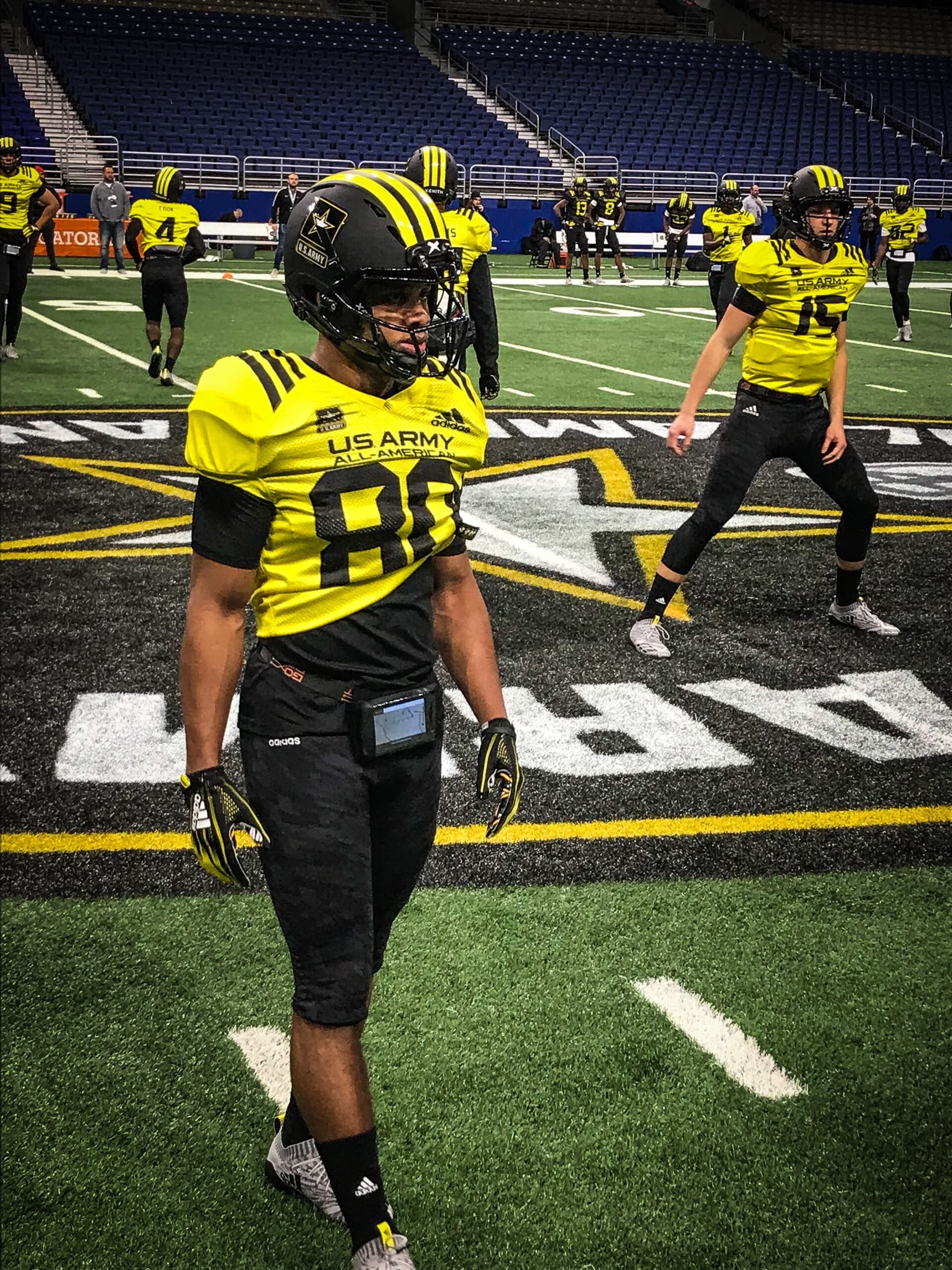
Nutrition For a Football Offseason Workout Routine
Nutrition powers your offseason routine in multiple ways. It helps prevent injuries, provide energy to help you get the most out of your training, and nourish your body to recover while maximizing the results of your workouts.
Hydration and Fluids
Hydration is the most important component of proper nutrition in offseason training. Players need to drink water and other healthy fluids before, during, and after workouts. It fuels performance and recovery while protecting players from heat-related illnesses.
Offseason workout risks: dehydration and other heat-related illness
Dehydration is a common medical condition impacting American football players throughout the year. It causes significant cramping, loss of coordination, shortness of breath, headaches, nausea, and dizziness – all impairing performance and safety on and off the field. In the most severe cases, dehydration can be life threatening.
Football offseason workouts are one of the most vulnerable environments for players to experience heat-related illness. That’s for two reasons:
- Offseason workouts typically take place in the spring and summer when temperatures are high
- Players actively train their bodies in the offseason, which means they are not at peak strength. That leaves them more susceptible to overtraining and dehydration.
The importance of proper hydration
Proper hydration ensures the body and nervous system is fueled for workouts and adequate recovery. Prior to working out, hydration prepares the entire body for physical activity and exertion.
During training, regular hydration refills the energy tank and reduces the risk of heat-related illness. After all physical activity, sports drinks and other fluids replenish nutrients lost in sweat while providing support to muscle and full body recovery.
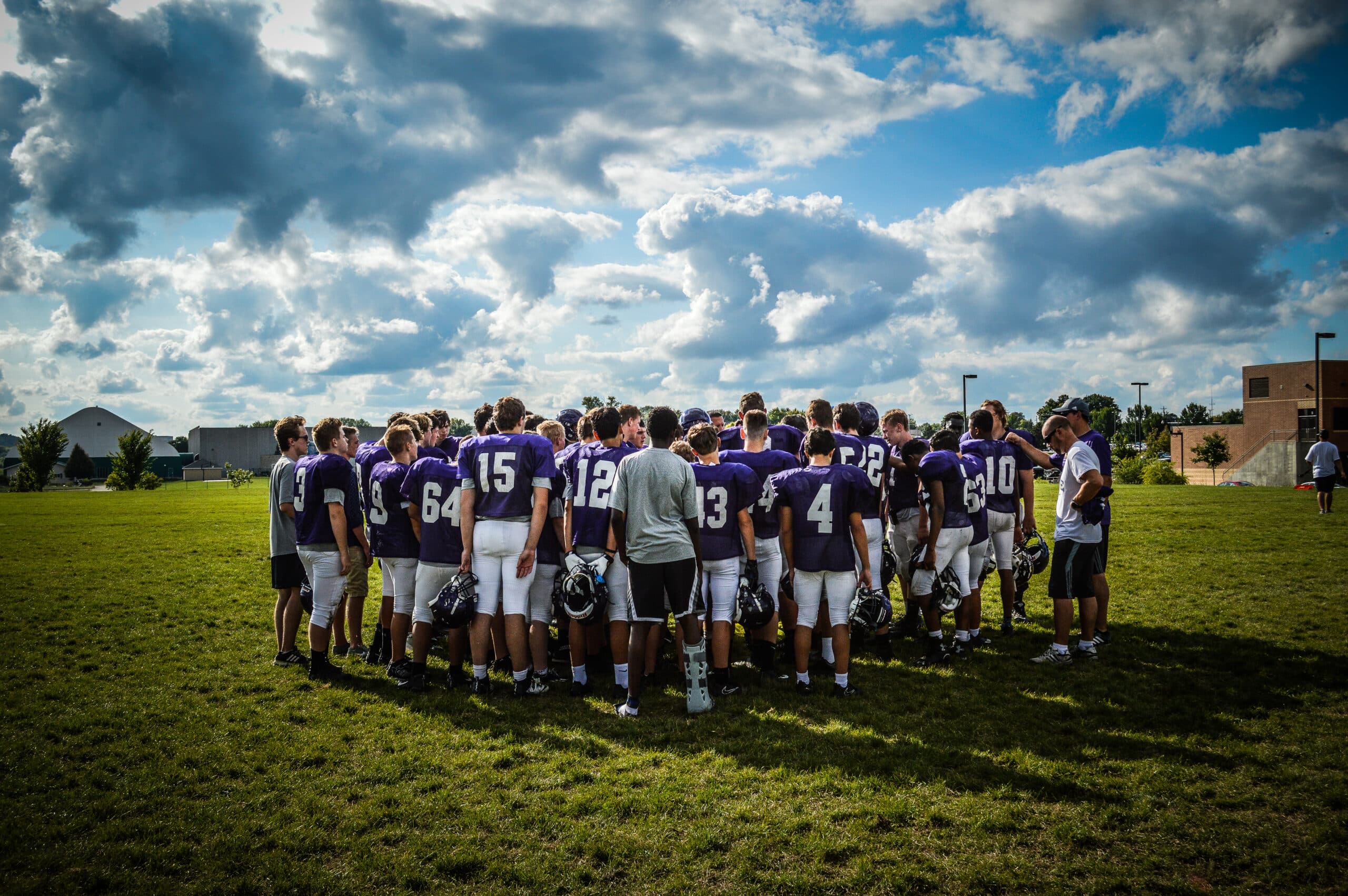
There are several types of fluids you can drink for hydration and recovery:
- Water: The most basic and accessible fluid for hydration, water regulates your body temperature and replaces lost fluids while aiding your mental and physical performance.
- Sport drinks: Combining water, flavors, colors, electrolytes, and sugar (or sugar substitutes), sports drinks are designed to help players stay hydrated and replenished through the duration of training. The electrolytes and carbohydrates provide additional benefits to players that water alone does not.
- Electrolyte solutions and beverages: While sports drinks contain electrolytes, there are beverages and solutions focused more on replenishing and rehydrating versus performance. Products like Pedialyte or Liquid IV contain a higher concentration of electrolytes than standard sports drinks, and a more even balance of electrolytes and sugar.
Other fluids and beverages that football players training in the offseason benefit from include;
- Caffeine: Beverages that contain caffeine – like coffee or soda – can provide players a boost of energy before training.
- Chocolate milk: Post-workout, chocolate milk can help limit inflammation and enhance recovery with fats and protein.
Staying hydrated through offseason football training
Drinking water consistently on a daily basis gives players a baseline level of hydration and focus.
On active workout days, try to follow these guidelines:
- Before training, players should drink around 24 ounces of fluids – preferably something with electrolytes – to maximize the performance of their muscles, organs, and joints.
- During activities, try to drink 4-8 ounces of fluids every 15-20 minutes. Monitor your body and if you feel like you’re not hydrated enough, drink more fluids.
- Post-workout hydration should include 16-24 ounces of water and/or sports drink – more or less depending on how much sweat you lost. This is also the time to drink chocolate milk for recovery benefits.
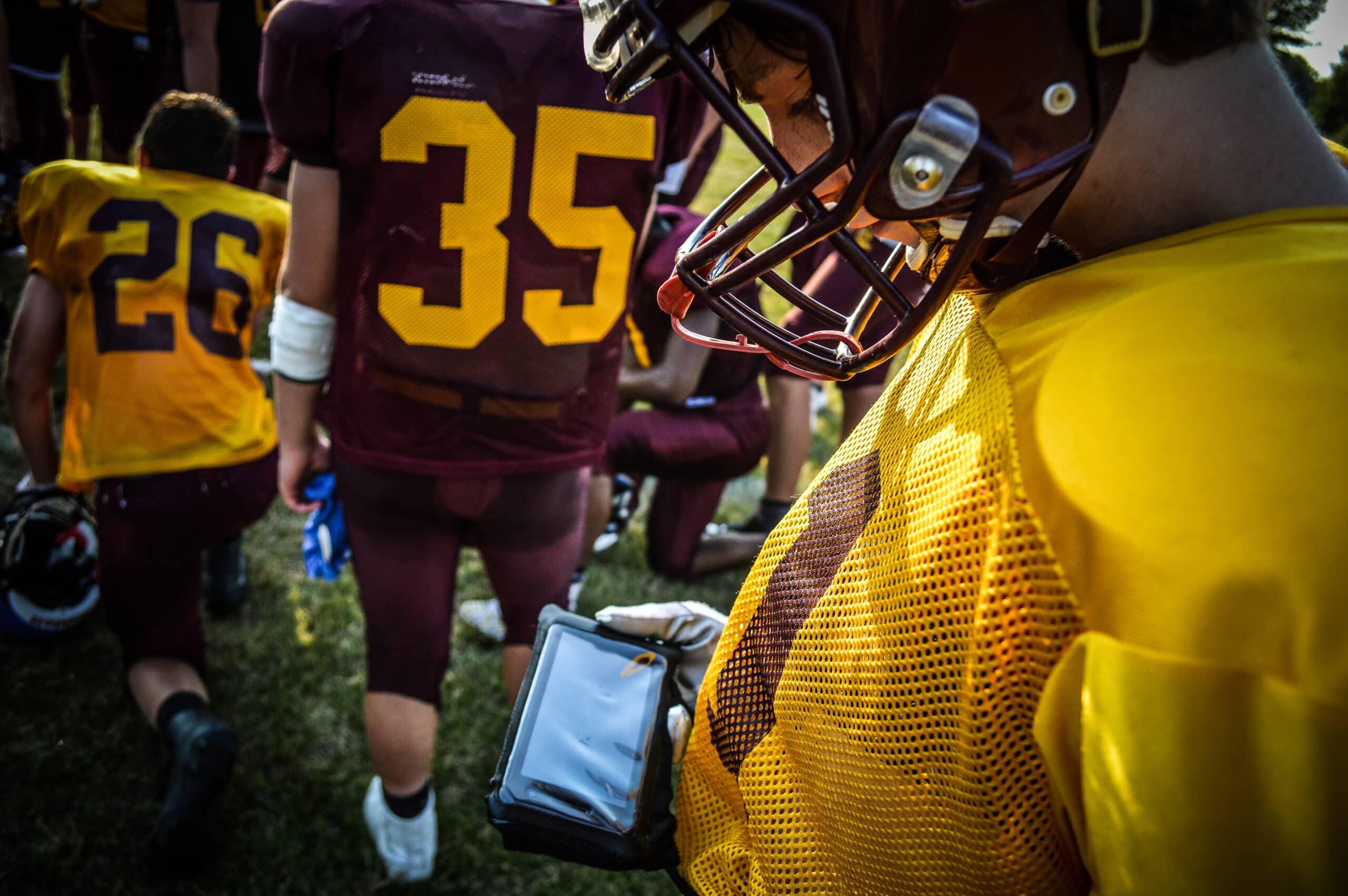
Diet and Nutrition for Offseason Football Workouts
When referencing diet, we mean the food that you put into your body. There is no one-size-fits-all approach to how you eat in the offseason, but there are a few key nutrients and foods that enhance performance and aid in recovery.
Key nutrients and foods include:
- Carbohydrates
- Protein
- Fats (nutritious ones only)
Carbohydrates
Carbs provide energy to make it through workouts. Your body digests carbohydrates into glycogen, which fuels your body and gets depleted through the duration of activity. Because it creates the same energy that gets depleted, carbs are important before and after workouts.
Some examples of nutritious carbohydrates for offseason training include:
- Whole grains like oatmeal, 100% whole wheat bread, whole wheat pasta, and brown rice
- Fresh fruit including apples, pears, bananas, pineapple, melon, and other whole fruits
- Non-starchy vegetables such as broccoli, spinach, peppers, greens, cauliflower, tomatoes, and carrots
- Starchy vegetables including potatoes, sweet potatoes, peas, corn, and squash
- Beans and legumes like black beans, kidney beans, and lentils
- Dairy such as greek yogurt, low-fat milk, and chocolate milk
Protein
The offseason is a time to both build strength and repair the body. Protein helps build and repair muscle. Lean, high-quality proteins should be a focus in every meal and snack during the offseason.
While you should prioritize protein, going overboard and consuming too much doesn’t provide any additional benefits. You can have a shake, bar, or smoothie if you’re short on protein, but try to spread it evenly throughout your day every day.
Examples of good protein include:
- Chicken
- Turkey
- Lean red meats
- Beans
- Dairy
- Eggs
- Fish
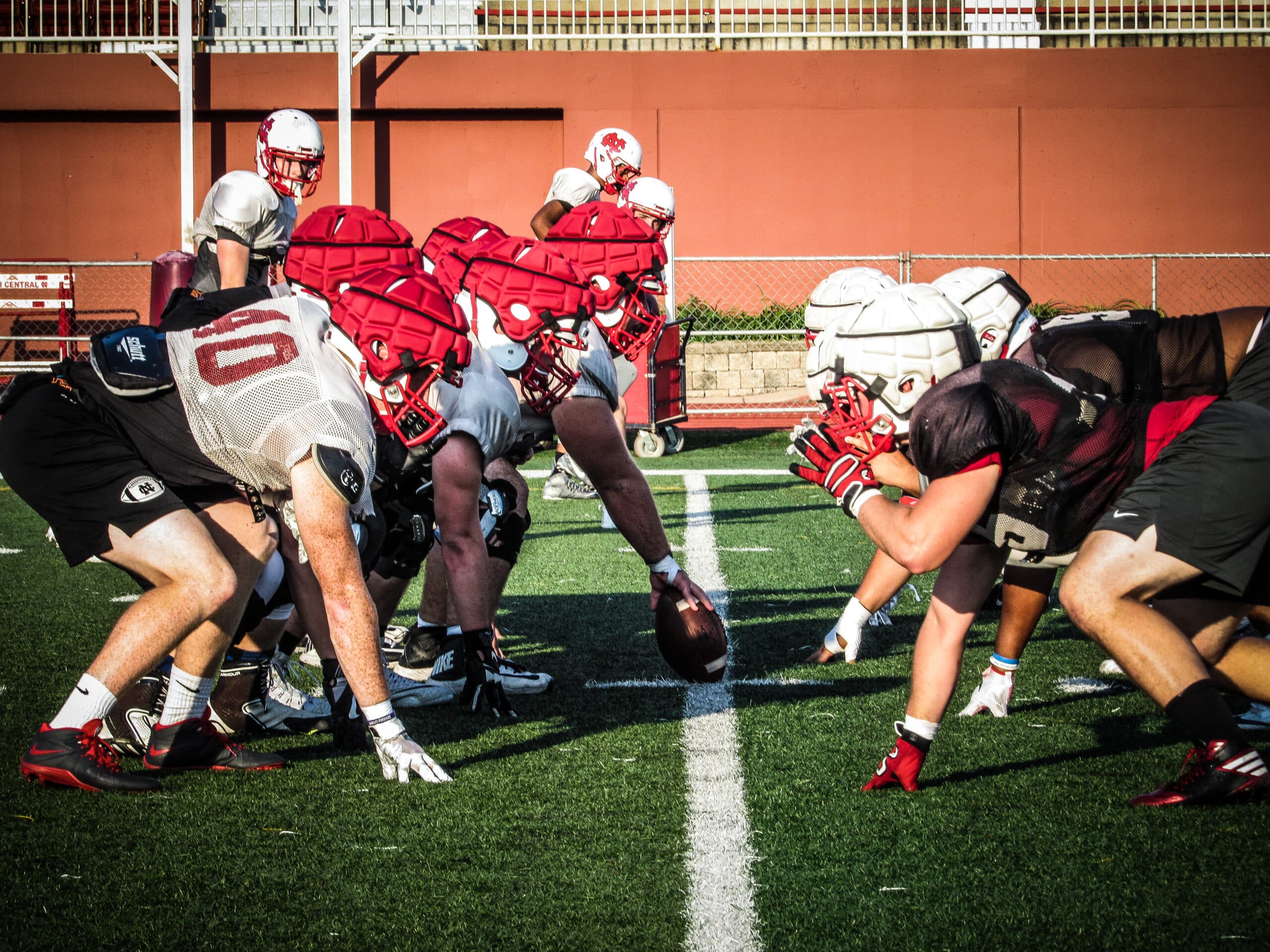
Fats (nutritious ones only)
If players don’t consume enough fat, their nutrient absorption and performance can be negatively impacted. It’s essential to eat the right type - unsaturated fats, which are beneficial for the heart. Bad ones – like saturated fat and trans fat – increase the risk of heart issues and weight gain, leading to deficiencies in performance and energy.
Try to eat these sources of healthy fats:
- Olives and olive oil
- Avocado
- Seeds (sunflower, flax, and chia)
- Nuts (pistachios, almonds, cashews, walnuts)
- Fatty Fish (salmon, tuna, halibut, and trout)
Avoid bad fats such as:
- Full fat dairy
- Butter
- Hydrogenated oil
- Fried foods
- Fatty beef, pork, or chicken
The final offseason workout nutrition tip: snacking
In between meals, it’s important for players to snack on healthy, natural foods. It keeps your body fueled with energy and helps your mind stay sharp. This does not include some of the least healthy, processed options labeled “snack” foods that are really junk food.
Healthy snack options include:
- Fresh fruit
- Greek yogurt
- Hard boiled eggs
- Popcorn
- Pretzels
- Trail mix
- Hummus
Avoid these unhealthy junk snacks:
- Chips
- Cheese curls
- Cakes
- Chocolate
- Many protein bars that aren’t nutritionally beneficial

Football Offseason Workout FAQs
How do you train in the offseason for football?
To train in the football offseason, players need to recover from the previous year while building strength and improving skills for the season ahead. Players should focus on a combination of strength and speed/agility training, conditioning, and football skill building.
Equally important to physical activity, your recovery habits, injury prevention techniques, and nutrition play major roles in the success of your offseason training.
What are NFL offseason workouts?
NFL offseason workouts are voluntary programs for teams in the National Football League to provide training, teaching, and physical conditioning for players. The official training programs have three phases spanning nine weeks.
In that time, teams hold a combination of:
- Strength and conditioning sessions
- Rookie minicamps
- Organized team activity (OTA) workouts, and
- Mandatory minicamps
What should you do in the football offseason?
Players should focus on healing their body from the previous season while preparing for the next year in their football offseason. If they have any weaknesses, want to learn a new position, or simply want to increase their chances of earning more playing time, players can learn, practice, and hone position-specific football skills. The point of the offseason is to become a better player and overall athlete.
Offseason activities should include:
- Rehabilitation programs to heal any injuries
- A combination of strength training, agility and speed work, conditioning, and football-specific skill building
- Proper injury prevention and recovery techniques
- Healthy nutrition and adequate hydration
How do you structure off-season training in football?
You should structure your football offseason training in four segments:
- Strength training to build muscle
- Speed/agility to improve quickness
- Conditioning to build endurance, and
- Football skill development to improve weaknesses, build on strengths, or learn new skills
What do football players do in the offseason?
In the offseason, football players recover from the previous season while building strength, speed, endurance and skills for the upcoming year. They do this through a combination of rehabilitation, training and workouts, injury prevention and recovery techniques, and proper nutrition and hydration.
Prepare For The Season and Download GoRout’s Free Offseason Football Workout Plans
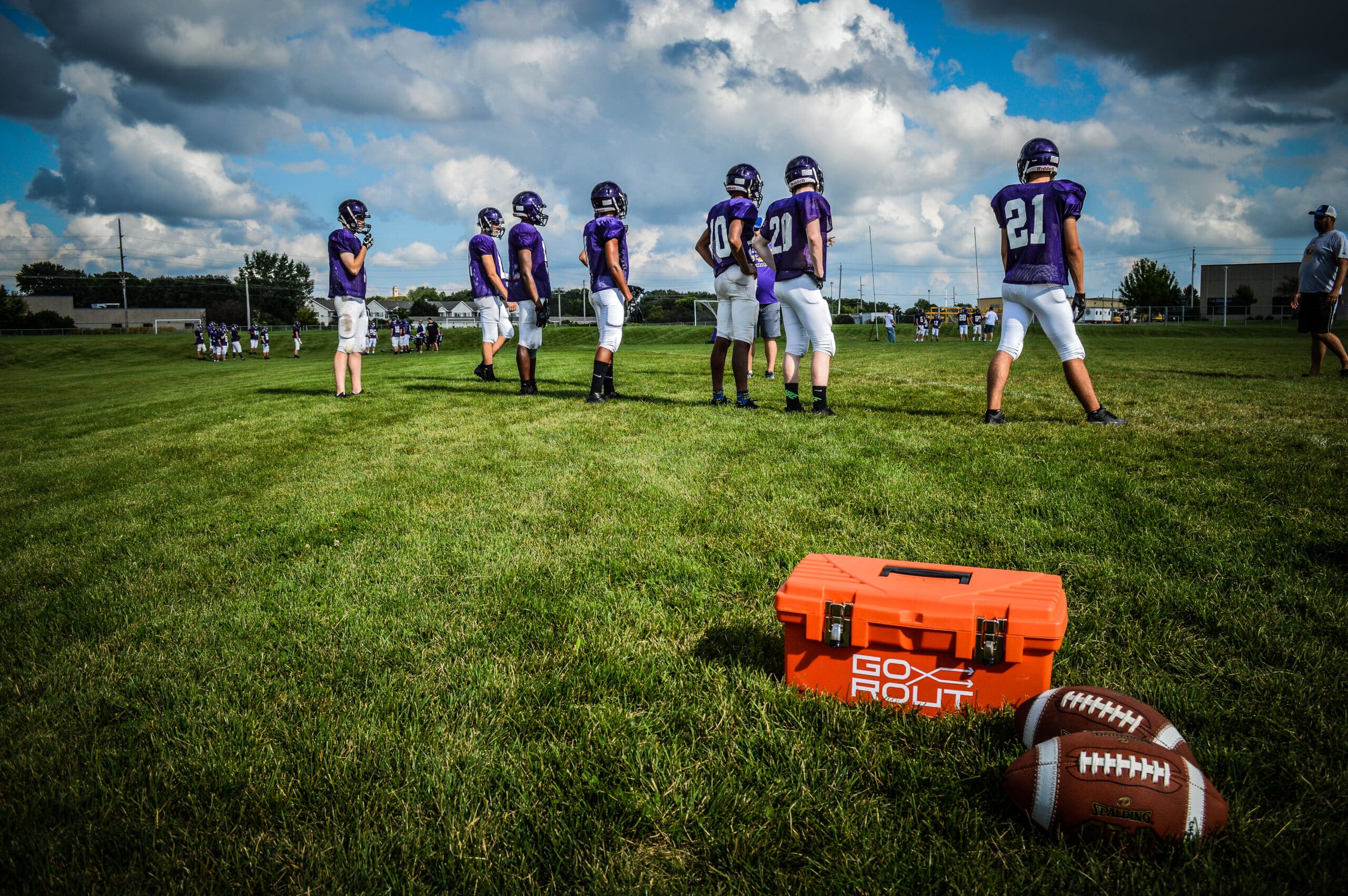
Become a better athlete
Building strength is crucial to becoming a better athlete. Our team at GoRout has designed this program to help you reach new heights on and off of the field. We have paired core lifts seen in every weight room across the country with auxiliary lifts that help create mobility and flexibility of your muscles and joints.
simple and effective
We know that not every weight room is equipped the same. Our plan is set up for the athlete or coach that has base level equipment and is looking to maximize their space. Keeping our lifts simple and effective was core to the idea behind this plan.
Resource within a resource
Whether you are a seasoned vet in the weight room or getting into lifting for the first time, this plan is for you. Each lift's title is clickable and will take you to a corresponding YouTube video showing you proper form.

